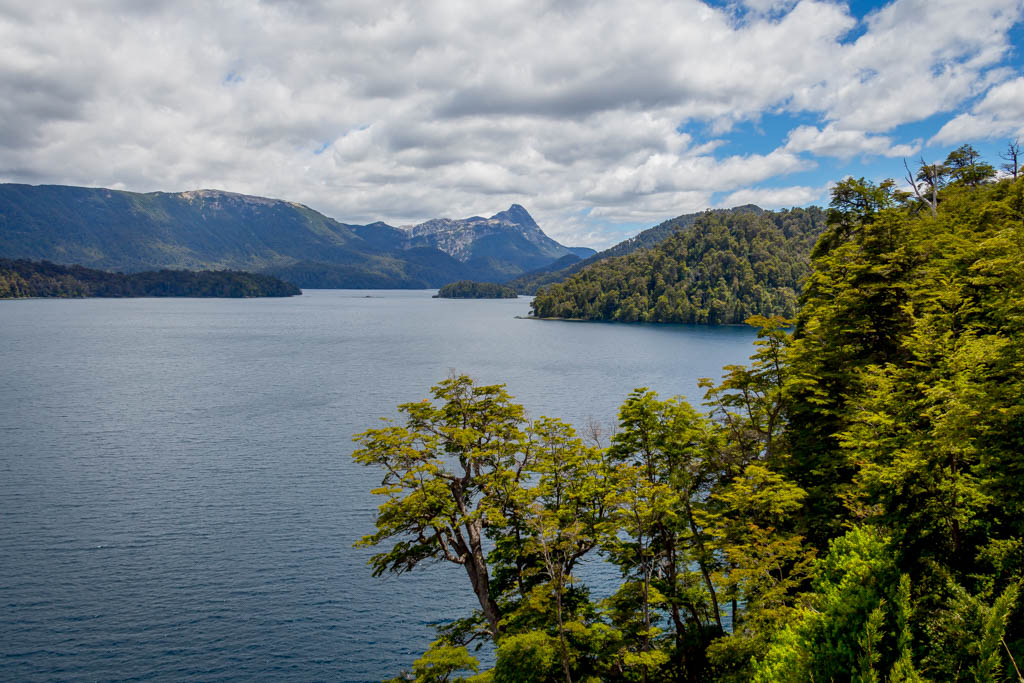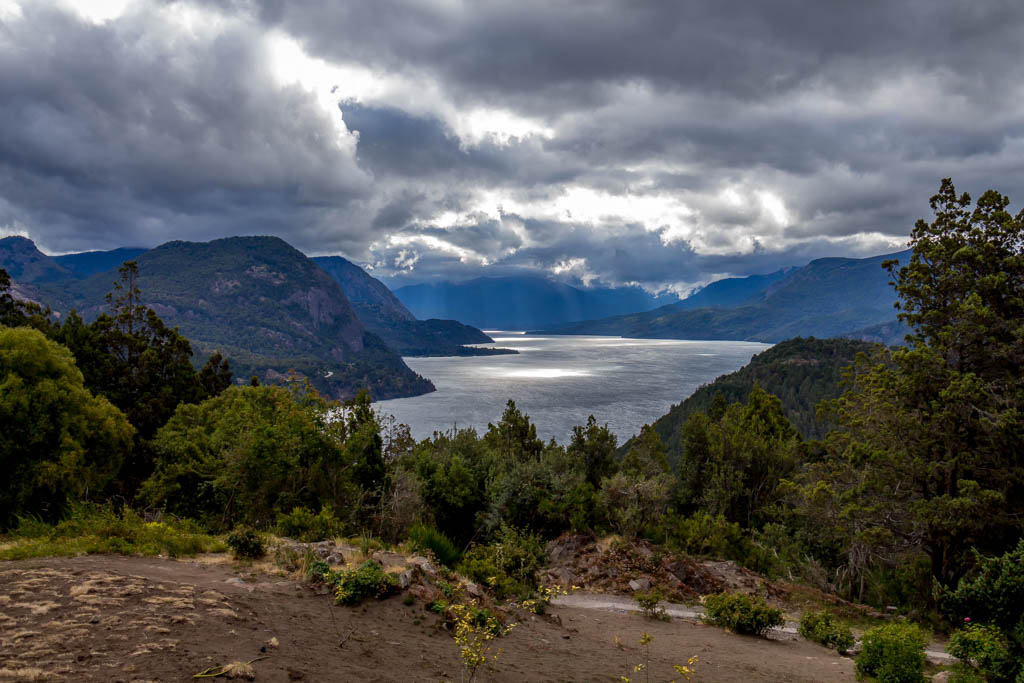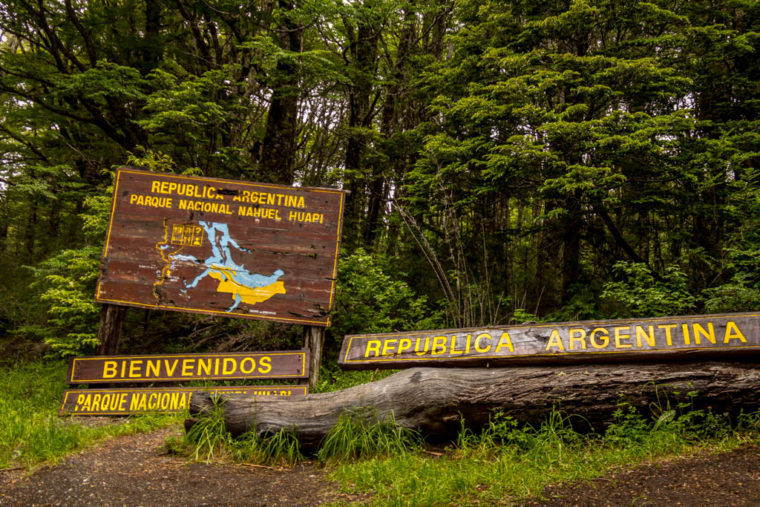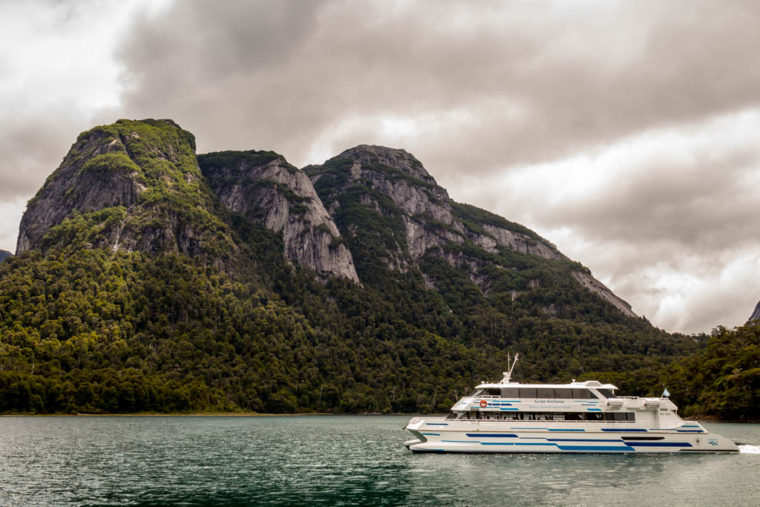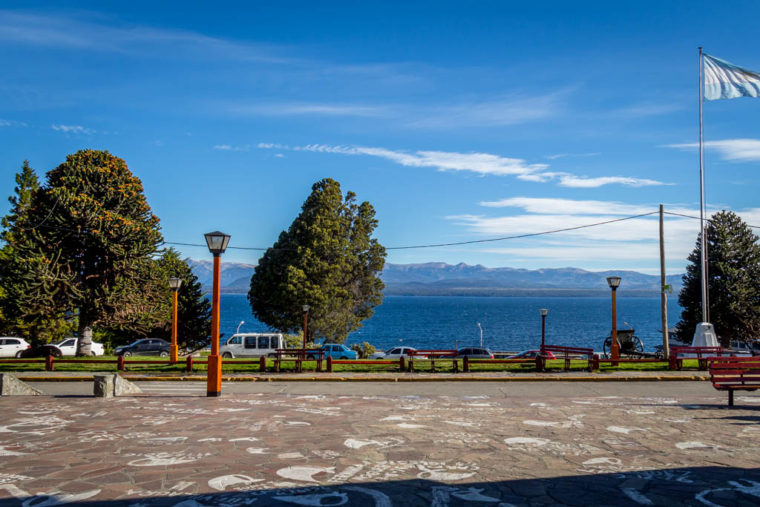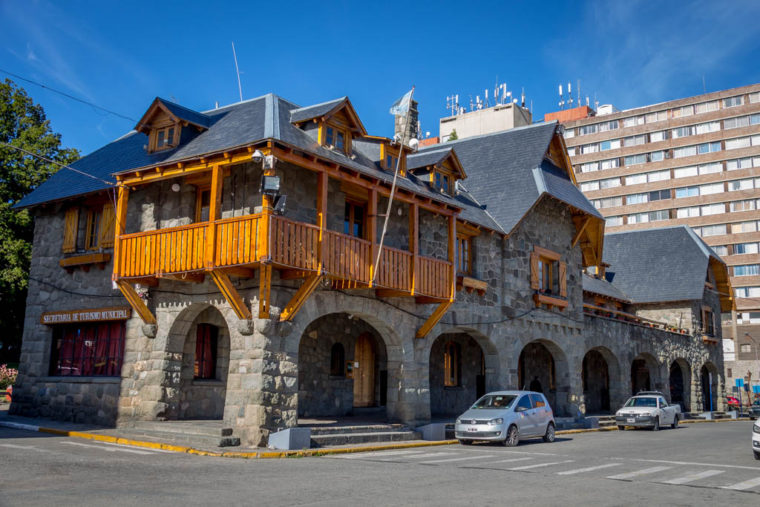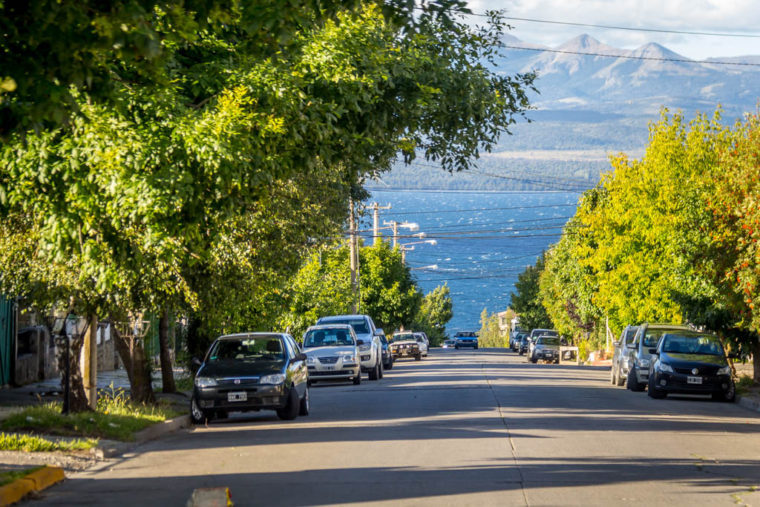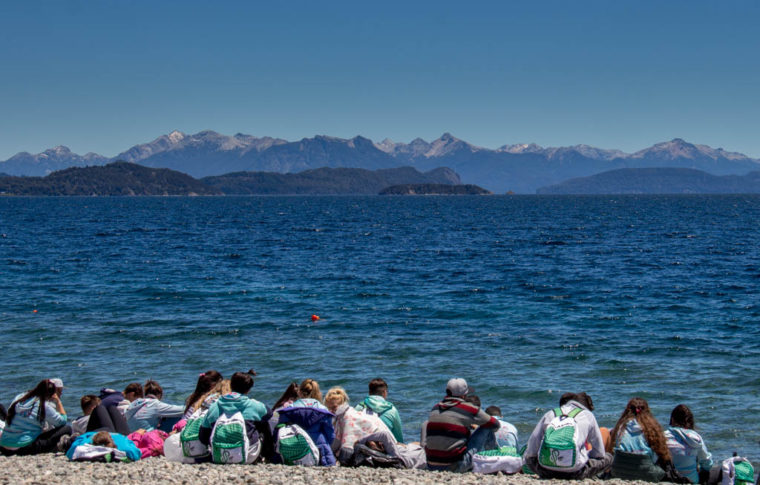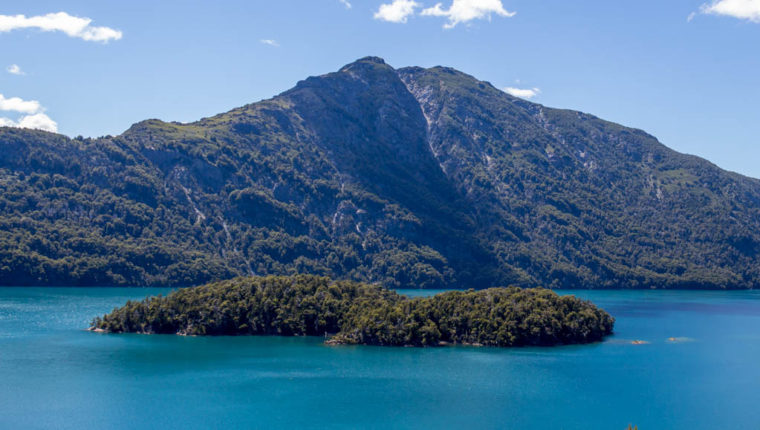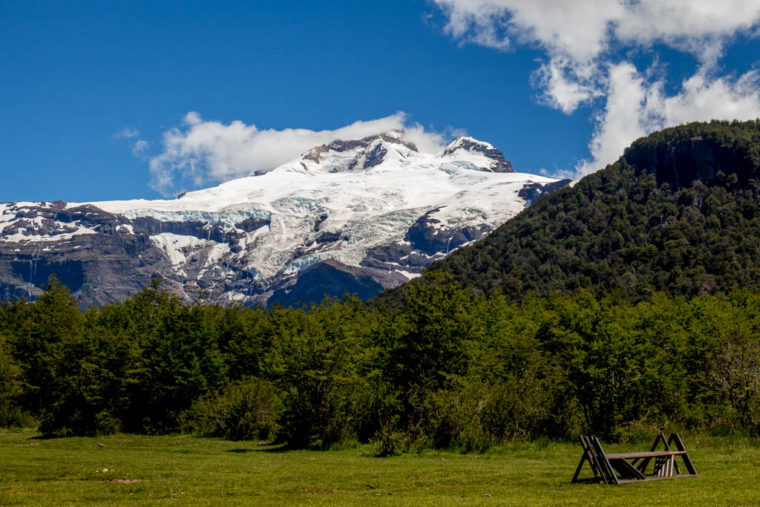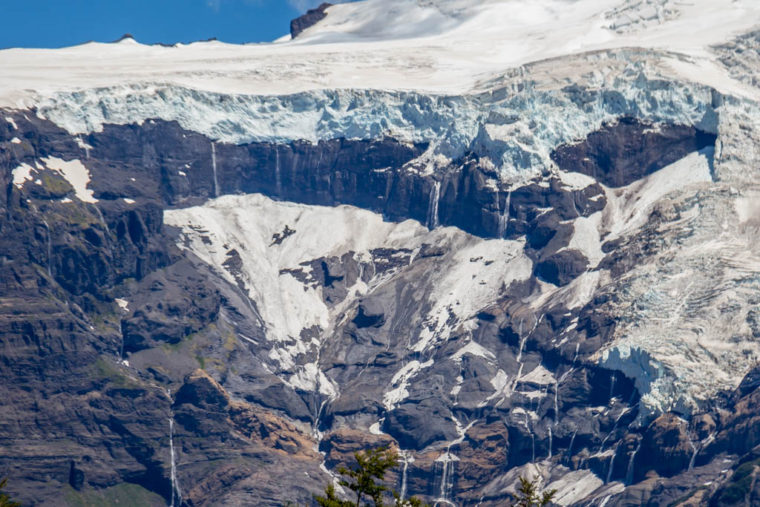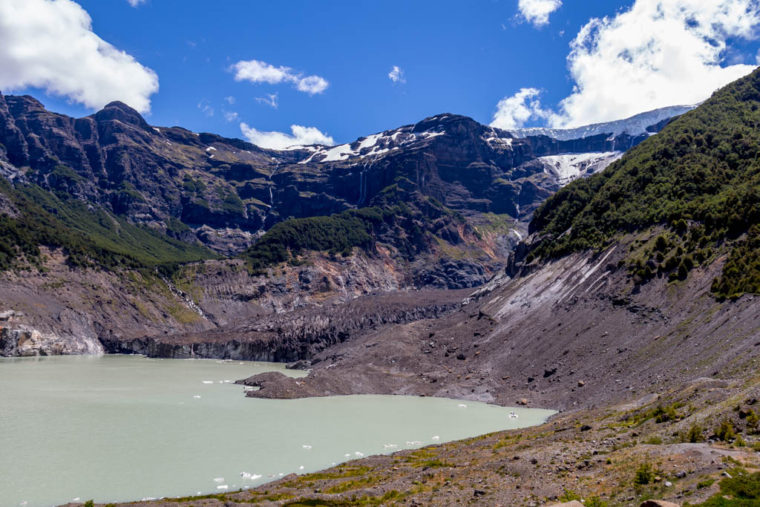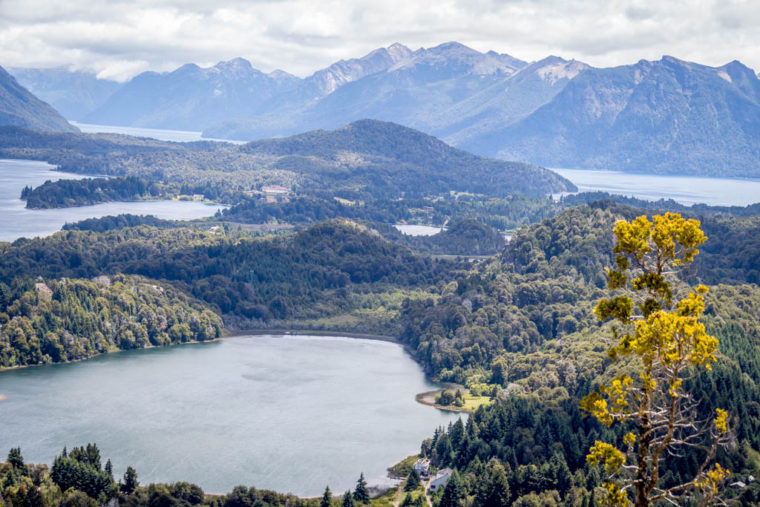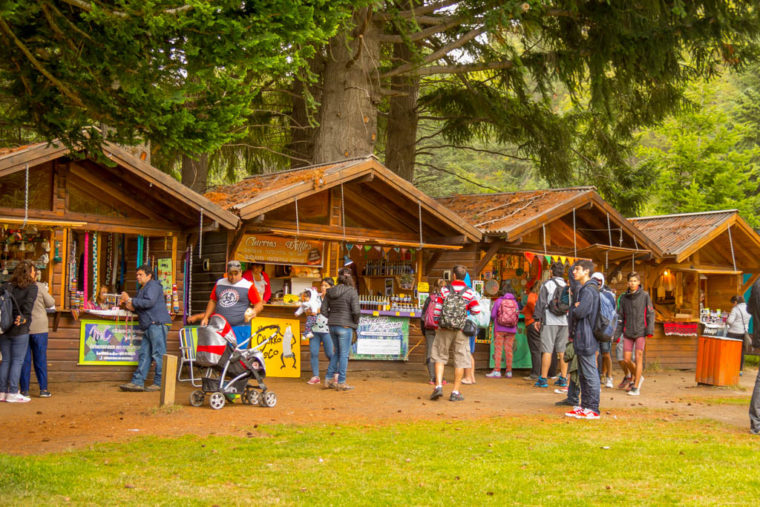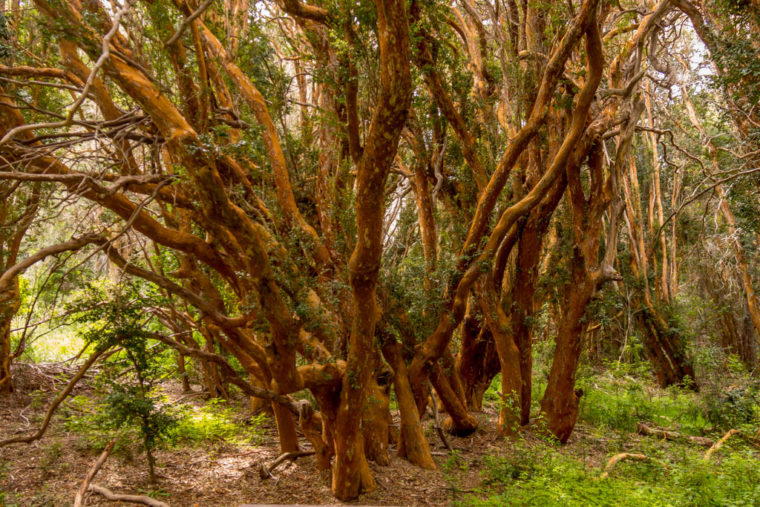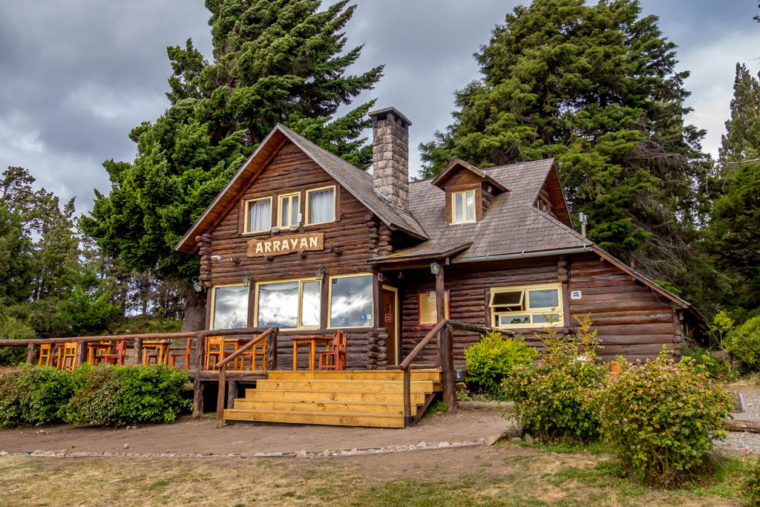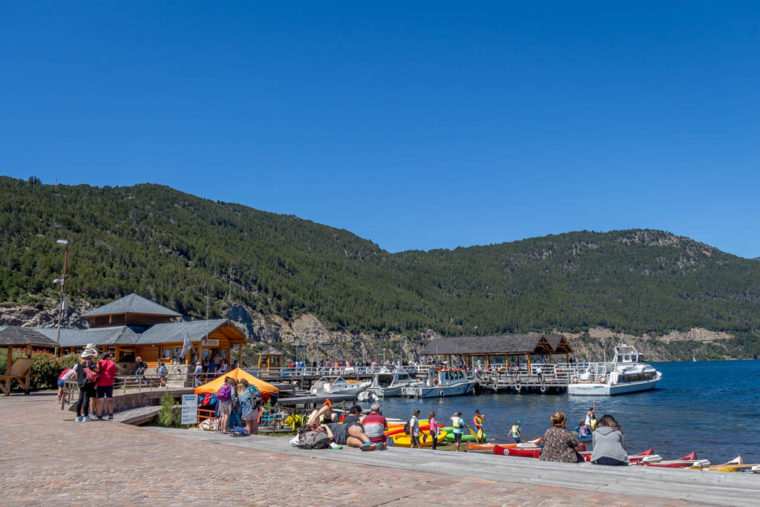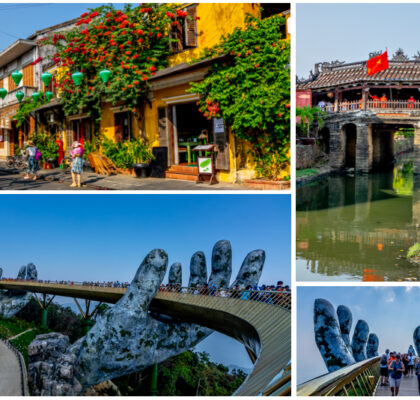Cruise Andino – Border Crossing
When we arrived at Puerto Frias we were met by a new guide and she made sure we got quickly through to the Argentinian border and as no one wanted to check luggage that day, it did not take long. We were now joining a group of tourist on a one day tour from Bariloche and taking over places from the people who would continue to Chile. After passport control we went on board a small ferry that brought us across the lake Frias. The trip wasn’t very long, and the subsequent bus trip to Puerto Blest at lake Nahuel Huapi, was also a short trip. At Puerto Blest we had time to get some lunch and a walk up to a waterfall before we with a nice boat ride arrived at Puerto Pañuelo and then the last bus ride to Bariloche. So after 2 days 4 tours by bus 3 trips by boat and a border crossing, I arrived at what would be my home for the next 3 weeks – Bariloche.
Bariloche
Coming to Bariloche through the mountains with a mix of boats and busses was a great way to see the countryside around the Andes and Lake Nahuel Huapi.
Ferries depart only to Puerto Pañuelo, so the last 25 km to the center of Bariloche is by bus, but actually it is Bariloche all the way. There are lots of houses, hotels etc. along the lake and in between there are some beautiful spots across the lake and up to the mountains.
We had followed an old Mapuche road, over the mountains, and it is not just the names in the area that indicates that we are in Mapuche land, you can also see it on the people. Not as much as in Chile but it is obvious, that a great part of people living in this area are carrying more or less mapuche blood. There are still a few Mapuche people living in the Argentinian Lake area but they can be difficult to spot as they are very few and they live completely as everyone else.
On the way from Puerto Panuelo to Bariloche we are not passing the main ski areas at Mount Cathedral but there are a couple of other hills where it is possible to get up with either a chairlift or a kabel car. From these hills – Cerro Otto and Cerro Campanero – there are beautiful views of the area: the Lakes Nahuel Huapi and Moreno, the islands and the peninsulas as well as the National Park in the surrounding area.
I never fell in love with downtown Bariloche but it is very difficult not to be impressed by its surroundings.
The city’s full name is San Carlos de Bariloche, but is referred to as Bariloche. It comes from the word Variloche which means the people behind the mountain. The main square down town is called the Civic Center and consist of stone buildings, build with inspirations from Bern in Switzerland and the city has several nicknames with reference to Switzerland and the Alps. There are also many other buildings in the city that will remind you of a city in the alps including the main shopping street Mitre. On one side you have shops with clothes and equipment for skiing and other sports, just like a city in the Alps. On the other side though you have something special for Bariloche – chocolate and ice cream shops one after another. In between you can find a few shops selling excursions, but most of them are located in the side streets, and there are many of them.
So yes Bariloche is a tourist city all year around. High season is the winter month of July and August, where mainly Argentinians and Brazilians come to ski but the summer is also a busy time. For a very good reason. The are so much worth seeing here in the surrounding Mountains and National Park.
The city is build up on the hills so like in Ushuaia you have a steep climb to get to the streets on the next level.
There is not much activity on the lake, there were a few sailboats but nothing in downtown Bariloche. The city is very windy, so I suppose activity will only be possible a few days a year. In my first week, I had 3 very hot days with temperature + 30 and very little wind, where it was great to be at the lake, but the rest of the time, it was very windy and then it is a cold city. I think, that is why I never really fell in love with it. It was very difficult to find places to be outside without being in the wind. Although is was summer, people was wearing jackets as if it were winter.
Something special for the city is that most, if not all Argentinian schoolkids in one of the last years are going to Bariloche. The majority come during the ski season, but there were plenty in December and January – before, during and after Christmas – as well. The young people were easy to spot, as they were almost always in groups. Each group was wearing identical jackets and caring a plastic bag. Not sure what was in the bag but they were nearly all walking around with one. Around 6 p.m. you could see all the groups walking in the same direction through the city. There was a program for them, and they were doing activities and eating together. Some days they were also carrying big bags with chocolate. I guess it was on there last days and they were bringing it home for the family.
The chocolate thing is really big in Bariloche and there are so many different types, not all equally good though. You could usually get a free sample. I tasted one that was really bad. After a little research, I found out what brands that received the highest recommendation and went for Mamuschka and Rapa Nui – and both tasted great.
These two branches also had ice creams but I only tasted Rapa Nui, and it was delicious. I like both chocolate and ice cream but I feel guilty eating it. Luckily by seeing all these shops, I was almost cured to eat something, but I did not think, I could leave Bariloche without having tasted just a few types.
Bariloches surroundings
As mentioned the surrounding area is beautiful no matter which way you are going. I went a little south to get to Mt. Tronedor – the highest mountain in the area. I had already seen it from Chile but it is far more dramatic on the Argentinian side with waterfalls and glaciers. In some years maybe only a few, the glacier might be gone though. It is getting smaller and smaller every year and with the amount of ice that had disappeared the last four years according to our tour guide, it goes really fast. The name Tronedor (thunder) is because a few sec. after ice is breaking off the glacier, you can hear it. The trip to the mountain was past lakes and rivers and is a really beautiful landscape. We also passed Mount Cathedral with the ski slopes
On the North side of lake Nahuel Huapi the national park is very large and it was a very colorful and enjoyable tour through the woods with the many different types of trees and other plants. There were many similarities with the nature, I had seen earlier in southern Patagonia but here it was larger and more colorful, as they get a lot more rain and the soil is more fertile. We did not see a lot of animals because there are too many people in this area but they are there just hiding. Like guanacos, pumas, foxes. In the national park there is one small village – Villa Traful – right next to Lake Traful but apart from that no one lives in the park. There are places to stay and to camp in and around the city and if you want to stay in the middle of nowhere, this is a great place to do that, The road to go here is unpaved but you can easily go there in a normal car. On our way from Bariloche along route 237 we passed a stunning landscape with some very special rockformations.
Between lake Nahuel Huapi and the national park runs the famous route no 40 and this is also the road to Osorno and Puerto Montt in Chile. Down to the lake where you reach the road to Chile, lies the idyllic small town of Villa La Angostura.
To get around Bariloche there are plenty of local buses. Along the Nahuel Huapi lake from Bariloche to Puerto Panuelo you will pass the peaks Cerro Otto and Cerro Campanero and you can get to an area behind the mountains called Colonia Suiza. There is a market day twice a week – Wednesday and either Saturday or Sunday. The place was created about 100 years ago by two swiss families and it was also here they started the production of chocolate. The local busses along the lake runs every 20 min and were often full before they left the city as people are going trekking in the area. The bus to Colonia a Swiss is only going once an hour and it took me around to the popular trekking areas and crossed Lake Moreno with some amazing view points to the peninsula Llao Llao.
One of the most famous tours is to follow route 40 from Bariloche, to Villa de Angostura and then north to San Martin de Los Andes. The route will pass 7 lakes, and although I did the tour in a normal bus with no panoramic stops, it is an amazing beautiful tour. Along the way there are plenty of campsites and it is popular road for bikers. A little dangerous as the road is very narrow but it is paved. It is a new thing, since it is only about 4-5 years ago that it happened. At that time Route 40 was moved to include the cities San Martin and Villa La Angostura
Route 40 is so famous that many tourists just follow the road and it does go through all the beautiful places all along the Andes from the Bolivian border to Rio Gallegos in the south of Argentina. After a volcano eruption in Chile in 2011 the entire lake area was covered with volcanic ash and Bariloche airport was closed for 9 month, or more precise the flights did not want to go there. It meant that the two cities depending on tourists suffered a lot during that period. To help them get more tourist the route 40 was swapped with another road, so now they get a visit from all the tourists following the route. Good choice as both cities are well worth visiting and both much nicer than Bariloche.
In my post about El Calafate I mention Perito Moreno and I will have to mention him again here. Argentina gave him a big piece of land for his help solving the border issues with Chile but Moreno gave the land back and asked it to be turned into a National Park. Argentina did not have any National Parks at the time and it took some years before the wish materialist, sadly it did not happen until after his death, but in 1932 the land was converted to the Nahuel Huapi National Park and created as the first National Park, shortly after the second park Tierra del Fuego was created and after that the Los Glaciers National Park around El Calafate and El Chalten or at the time around Mt Fitz Roy. Today Argentina has 11 National Parks. In Bariloche they have named a lake after Moreno and there is also a museum.
Villa La Angostura
A charming little city, where the old part is at the lake and a new part is around the main rodes to Chile and San Martin. It is just outside the national park, at the Nahuel Huapi lake and the sceneri of 7 lakes on the way to San Martin. Very close to the border to Chile where many Argentinians go shopping, because it is cheaper and they can get a lot they can’t get in Argentina. From Bariloche it is possible to go on one day shopping tour to Puerto Montt. A long trip but that is what they do.
The border crossing is also important for Chile as it is their only way to transport goods on vehicles to Puerto Natales and Punto Arena in southern Patagonia.
The main street of the new town is very nice with many shops and restaurants.
From the old city you have both a windy and a calm side with beaches and you can get to the island and peninsula Victoria and Inicio Bosque de Arrayarnes, which are both park areas. This is where you find a forrest full of the special orange arrayarnes trees, they have no bark and are always cold. You can also take a boattrip to these places from Puerto Panuelo on the other side of the lake.
San Martin de Los Andes.
The city is 180 km north of Bariloche and I was told many many times that I had to go there, so i did. The city is really nice and worth visiting. It is laying at the lake Lacar, where there is a beach and a short promenade. it is also possible to take tours on the lake with a very nice scenery all the way almost to the Chilean border.
Contrary to Bariloche there was a lot of cafes where it was possible to sit outside and as summer had now finally arrived, I did not do much else than enjoy the good weather.
Around the city are many opportunities for hiking. Just behind the town you can walk up and get a super view over the city and if you walk long enough, we would reach a lovely teahouse. A small restaurant, which opens daily at 4 p.m. and served 4 a ‘clock tea with scones and homemade cakes. About a century ago an english actress visited her brother who worked in the area. One day out walking she reached the spot where she enjoyed the beautiful view of the lake. She convinced the city council that she should be allowed to open a teahouse and after some time, they gave her permission and the place was run by her family for many years. That is no longer the case but it is still run in the way she wanted. The weather was a little less sunny when i visited but it meant they did not have to put down the blinders to cover the view and the clouds were changing the view constantly. Great place – including the tea, scones and cake.
San Martin is surrounded by the Lanin National park. I went through a big part of it arriving in San Martin and we also went through the park going north to go back to Chile.
The border was close to the Lanin volcano which is inactive, and we must have climbed up to reach the border at Paso Mamuil Mall but I did not really notice. A little different experience getting in to Chile.
To read about that and Pucon see the post about the Chilean Lake district
Summary
I spend a lot of time in the Argentine lake area. 3 weeks in Bariloche and 5 days in San Martin. There were really nothing to do in Bariloche, but my plan staying there for three weeks, was to do nothing. I did miss being able to be more outside and had also been hoping I could bike a long the lake. I could, but without my electric bike, I think it would have been a tough ride. The main reason I skipped the option though, was that the road was too dangerous. Very narrow, lots of traffic and when there were space next to the road, it was not bike friendly at all. Instead I used a mix of public transportation and tours. The public transportion was time-consuming but otherwise fine and I had plenty of time so what I missed was the stop to get the pictures of the amazing scenery. I did go on a scenic tour called Small Circuit Panoramic Tour but unfortunately it started to rain just as we were reaching the great views. It was quite funny to hear the guide talking about panoramic views, as we could not see anything. It was difficult because of the rain but it became even more difficult from the bus since ventilation in the car did not work, so all windows were misted including the windshield. The guide and the driver had to constantly wipe the window in order to see anything. A little scary to see the driver standing up while he was driving the bus on the narrow roads.
All in all I had a great time in the area and had some wonderful tours where I met some really lovely people. I did not do all actives such as the many adventure activities and beer tours to the local brewery and as my photos can’t prove all the great views, you will have to trust me. This area is beautiful and has a lot to offer. it is well worth visiting.
You can view more pictures here
This entry was posted in Argentina, Destinations, Lake District Argentina, South America
